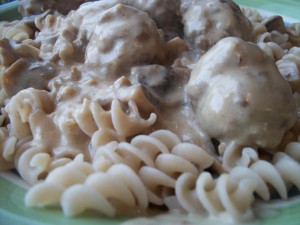Recently I’ve been seeing a lot of posts shared from the Matt Walsh blog. I gather that Walsh has a radio show somewhere and the blog is an extension of that.
Some of the posts of his that I’ve read, I’ve enjoyed, even if I didn’t agree with everything in them. In fact, it’s probably fair to say that if you took a one-sentence summary or thesis of the main points of his blog posts, I’d probably agree with the overall gist of most of them. What’s really disappointed me though, especially considering how viral some of these posts go, is the manner in which a lot of these opinions are expressed. And with his latest post on homeschooling… well, I just felt like I had to write up a bit of a response to it (okay, a really long one – whatever!). To be fair, I have never met or listened to Matt Walsh, and this is in NO way an attack on him or even his core beliefs – just a response to what he said in this post. I don’t exactly want to give him more traffic, but I do believe in citing sources, so here it is: We Are Going to Home School Our Kids But That’s Only Because We Hate Education.
For starters, it should be noted that Matt Walsh is not currently a homeschooler. His children are not yet school age, and he was not homeschooled himself, so it’s fair to say that while I’m no more of a homeschool parent than he is, being homeschooled for 13 years probably means I have more experience with it than he does, and likewise, he has more experience with public (pre-college) education than I do.
He starts out the post sharing very short snippets of comments he received after a broadcast. I didn’t listen to the broadcast, but if it resembles the nature of his blog posts, I imagine there was probably a lot of ranting, raving, and judgment. So it’s really not surprising that he would receive negative comments from people who were offended, as anger and judgment tend to stir up more anger and judgment. He uses these out-of-context snippets as the launching point for the post.
One of these comments, of course, involves Hitler, which seems way too early in any piece to be bringing up Godwin’s Law, but it strikes me as an especially inflammatory way to start a blog post. Sure, that does sound like a pretty terrible thing to say to someone, regardless of what the actual context of the comment was, but it also provides an opportunity for Walsh to begin his post from a reactionary point of view – encouraging the notion that he is under some form of “attack” for expressing his beliefs (a tactic that he has employed in several previous posts as well).
He goes on to talk about some of the horrible things people have told him about public schools. And yes, I’ve heard some horrible things about them too. Some of them were even from sources other than Fox News. Only one of these examples he uses includes any kind of source citation.
This leads into what is probably his main point, that government schools exist to instill the beliefs and propaganda that the government wishes people to have. I think this point makes sense, and can be helpful in encouraging parental awareness of what is being taught, but I believe it also unfairly minimizes the extremely nuanced realities of each school, school district, and teacher. According to the National Center for Education Statistics, there are over 100,000 public schools in this country, employing over 3 million teachers. Numbers like that mean there will be a lot of variables when it comes to the ways in which education is carried out. It seems an oversimplification to present the government involvement as a guaranteed means of mind control.
Even then, I’m still not completely clear on what specifically Walsh is accusing government-run schools of doing. He states:
Sure, take a look at your Facebook newsfeed and you’ll find that most of us can’t write coherently, or express a formed thought on any topic, but government education has still been enormously successful. Decipher these ramblings and what do you find? Not much, and that’s the point. Score one for Government Education. Now try this: write something really outside of the mainstream box. Write something that questions our cultural values and societal priorities. Post it, and see what happens. The trolls came out of the ground like Lord of the Rings to viciously attack, probably wishing death and destruction upon you, right? Score two for Government Education.
Walsh implies (though how exactly he made the connection is unclear) that government education leads people to viciously attack others for having unpopular opinions. Not only is this paragraph inflammatory, but given the fact that 1 in 10 students do not attend public schools, it also seems like it would be rather difficult to tell which of the “attackers” or “people who can’t form a coherent thought on facebook” he mentions are actually products of public education and which are not. Did he take a poll? Does he keep tallies of which of his friends produce poorly written status updates and cross reference that data with their educational backgrounds? Unlikely. That entire paragraph is based on a lot of generalizations and weak assumptions. If you start with the assumption that government schools are evil, then just about anything you find in society can be attributed to that if you try hard enough, which is why it is generally inadvisable to start with a conclusion and then work backwards.
I’m just going to go down the line with a few more key quotes/points:
And this is why people hate home schooling. They hate it because it’s against the grain. It’s too far “out there.”
Hmmmm… I have to ask – how many people really hate homeschooling? And which people? And to what degree? I mean, aside from Hitler. I’ve certainly had encounters with people who were uninformed about homeschooling. Even some who actually disagreed with it. And that is their right, just as it’s anyone else’s right to disagree with public schooling. But is disagreeing with homeschooling the same thing as hating it? That would be a pretty strong assertion, and I think the answer is no. Now, maybe when my child is old enough to be homeschooled, all the haters will come out of the woodwork and start attacking me, especially if I start getting all arrogant and publicly putting down other parents’ choices of educational venue. In which case I would deserve some pushback. (Note: I’m certainly anticipating that I might receive questions and even pushback from some sources anyway, but that’s not the same thing as hate. I’ll keep you posted as to how much “hate” I find myself on the receiving end of.)
Once again, this goes back to the beginning of the post, striking a tone of persecution. I know there are homeschooling families who have been persecuted for what they do, so yes, it’s safe to say that some people DO hate homeschooling. That is a terrible thing, and I have a lot of admiration for the attorneys who are fighting for their freedom. Because homeschooling is a parental right. But I would be careful in putting forth too generalized of a “people hate homeschooling” message. Maybe people just tend to get their dander up when listening to angry rants that rely so much on assumptions and paint others with broad brushstrokes. Certainly Walsh is not happy with those who make negative assumptions about homeschooling based on anecdotal evidence – why is it okay for him to use the same tactics to vilify public schools?
Only in America (and other nations where the family structure is disintegrating) could we decide that parents are incapable of helping their children “develop the powers of reasoning and judgement.” In fact, in more primitive times, folks would have been crazy enough to think that ONLY parents are suited for that job.
I definitely believe that families are important, and that the disintegration of the family unit is a bad thing. But I find this statement misleading in a number of ways. First of all, the existence of public schools and the encouragement of their use does not mean that we believe parents are incapable of helping their own children learn. I’m sure some do, and that is unfortunate, but these things are not mutually exclusive.
Then the second sentence suffers a bit from the “noble savage fallacy” – the act of idealizing people from more primitive times and cultures, with the assumption that they possessed some kind of innate wisdom that we have since lost. The fact is, if you’re reading this, you’re not living in a primitive place or time. Some primitive practices and ideas were timeless and are still valid today, and if so that’s because they are good, not because they are primitive. I’m glad my parents, while still using traditional values, aimed to raise me to be successful in the era that I am in – not in one that no longer exists. I’m also glad they took control of my education without limiting it to such a degree that they were the only people in the world who were allowed to teach me anything.
Lastly, we come to the final paragraph of the blog post, which is probably the one I agree with the most:
But indoctrination and education are dimensions of each other. Indeed, indoctrination can be defined as “teaching or inculcating a doctrine, principle, or ideology, especially one with a specific point of view.” Doctrines and principles are inexorable parts of the process of passing on knowledge and information. The question before us is: who ought to be in charge of this task?
Both Walsh and I have the same answer to this question: parents. I believe that the best step to a good education is involved and invested parents, because both my husband and I have seen that at work in the families we grew up in, even though I was homeschooled and he went to a public school. But where Walsh and I differ is that, even as a homeschooler and hopeful homeschool mom someday, I also believe that good parental involvement does not have to mean homeschooling, nor should educational options be presented as objectively hierarchical! Which really shouldn’t be an extreme statement at all, but based on the elitism and “all or nothing” sort of approach that is put forth here about homeschooling, I think it needs to be said.
One of the many things that rubbed me the wrong way about this piece was that early on, Walsh seems to give a bit of a disclaimer:
If you don’t want your kid subject to government propaganda and government control, then don’t send him to a government facility 6 hours a day, 5 days a week, for 13 years of his life. Or go ahead and send him — perhaps you have no choice, I understand that — but confront the reality of the situation.
He admits that some parents have no choice as to where they send their children to school. But does he even allow for the possibility that some parents DO have several choices available to them and still choose public school, and that that may even be the right choice for some families? I hope he doesn’t think we’re all simply divided into two groups of “those who homeschool” and “those who can’t.”
And while it’s wise to “confront the reality of the situation” – i.e. being aware that government schools have disadvantages, and will teach principles that some parents disagree with, that doesn’t mean some parents don’t still choose, for their own reasons that certainly do not need Matt Walsh’s approval, to send their children to these schools.
Yes, parents are the chief influences in their children’s lives, and are ultimately in control of their education, but this is true regardless of which educational choice(s) they make for their kids. Either public, private, or home schooling (or a combination!) have their pros and cons, and can be best for one family or child, depending on the situation. It pains me to read blog posts like Walsh’s that paint such choices as so “either/or,” using paranoia and hyperbole to air his opinions. He’s preaching to the choir. Those who already agree with his premise might feel happy that he’s validating their choices (or just be annoyed at tactics that are inflammatory rather than informative), while those who disagree with his premise are going to be enraged rather than “converted” by his rantings and judgment. The point that parents are ultimately in charge of the task of education is a point that, while important, could have been made in a much more compassionate and less sensationalized way.
And I certainly hope that any non-homeschoolers who read the opinions in that post do not take them as indicative of what all homeschoolers believe, because they are not.



